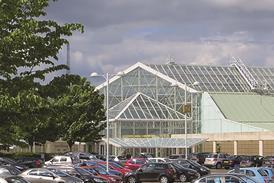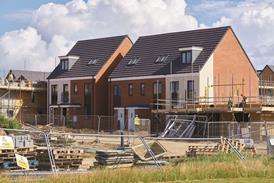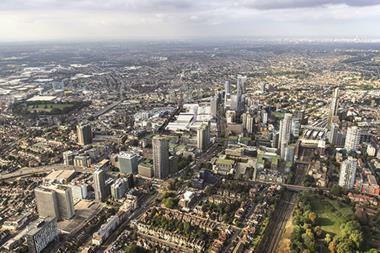UK real estate is in a precarious position, with chronic housing shortages and rising mortgages posing a significant challenge to the future development of residential and commercial properties. Homeowner confidence has declined dramatically, with 62% of Londoners dissatisfied with the state of the housing market since 2019.

Commercially, the pandemic has reshaped how we live and work, with mono-use developments such as offices and retailers suffering the burden of reduced commercial footfall. With leases in London dropping to only two years and 10 months, the lowest level on record, the impetus is on architects to find innovative solutions to property woes.
Architects’ attempts to restore confidence in commercial and residential real estate are increasingly defined by the value of mixed-use schemes. While mono-use developments are struggling to regain their footing, smartly built, multi-use developments are poised to offer the economic vibrancy and adaptability that will direct urban development.
One of the most important facets of architectural developments is the extent to which they reflect current cultural values. This is crucial because the shift in cultural values caused by the pandemic resulted in a 5.1% reduction in commercial footfall in London’s commercial areas, which has altered how people interact with London real estate.
Reduced footfall is indicative of a transition in how people live and work, with commercial real estate prices and value consequently set to fall by 40% in the second half of 2024, leading to an overall decline of 13% for the whole year. Monolithic, single-use structures are struggling due to a change in work and leisure patterns, particularly with the rise of hybrid working provisions.
Such challenges, however, are providing impetus for multifaceted developments that can serve a range of functions, and serve them well, in pursuit of developments with a stronger sense of economic adaptability.
Ultimately, mixed-use developments’ rising popularity results from a shift in mentality; in the words of JP Morgan analysts, “convenience is now king”. People desire a vibrant ecosystem in which local leisure, work and commerce are easily accessible from where they live, and mixed-use developments are constructed based on such principles.
Mixed-use schemes distribute multiple institutions with a variety of functions over a concentrated plot of land, creating urban developments with a sense of economic vibrancy. Consequently, the construction of mixed-use schemes makes them uniquely resilient and adaptable, with those who are not engaged by leisure opportunities able to feel engaged by financial and cultural ones and vice versa.
In this sense, mixed-use schemes are a holistic response to real estate challenges that allow urban developments to have the flexibility and convenience to attract business and investment, restoring confidence in urban real estate.
The rise of mixed-use architecture will not only transform urban development in accordance with changing cultural norms but also empower architects to express their fundamental values: advocating for sustainability and harnessing architecture’s potential for positive social change.
Sustainability has come to shape modern architecture and for good reason – buildings are currently responsible for roughly 35% of global energy consumption and nearly 40% of carbon dioxide emissions. New urban developments must consider their environmental impacts; building a single-use structure that will become obsolete is now inappropriate.
Mixed-use developments encourage the positive environmental impacts of architecture, by transforming rather than demolishing outdated space. For instance, UK department store space has declined by 83% since 2016, but forward-thinking architects have seen the opportunities of abandoned department stores, with a former BHS store in Edinburgh being converted into a fused office, hotel and bowling alley.
Creative solutions such as these give mixed-use architecture the ability to reshape urban development, letting architects extract the maximum value from existing properties by incorporating additional functions.
Furthermore, mixed-use developments are redefining urban design by encouraging architects to create properties that serve wider social and community goals and will leave behind positive social impacts. The multiplicity of functions offered by a mixed-use development allows them to form their own sense of internal communities. Architectural projects should aim to have positive impacts, serve a wider good and improve local communities.
Mixed-use developments offer people agency in the space in which they live and work, with the increased amount of time spent in the community fostering a sense of belonging. Such identification encourages homeowners’ satisfaction with where they live, which should serve to increase the currently declining homeowner confidence in residential real estate. Further urban developments should continue to encourage such trends.
UK real estate is facing real challenges; however, the discourse surrounding these issues lays the groundwork for architectural innovations that can shape urban development. As urban space becomes increasingly contested, mixed-use developments are poised to address some of the most crucial woes currently facing the property market. The fusion of functions they represent encourages architects to create economically adaptable, convenient developments that also meet their core goals of promoting positive environmental and social impacts. Smartly built,mixed-use developments should be the standard for urban architecture in the 2020s.
Daniel Leon is a director at Square Feet Architects































No comments yet